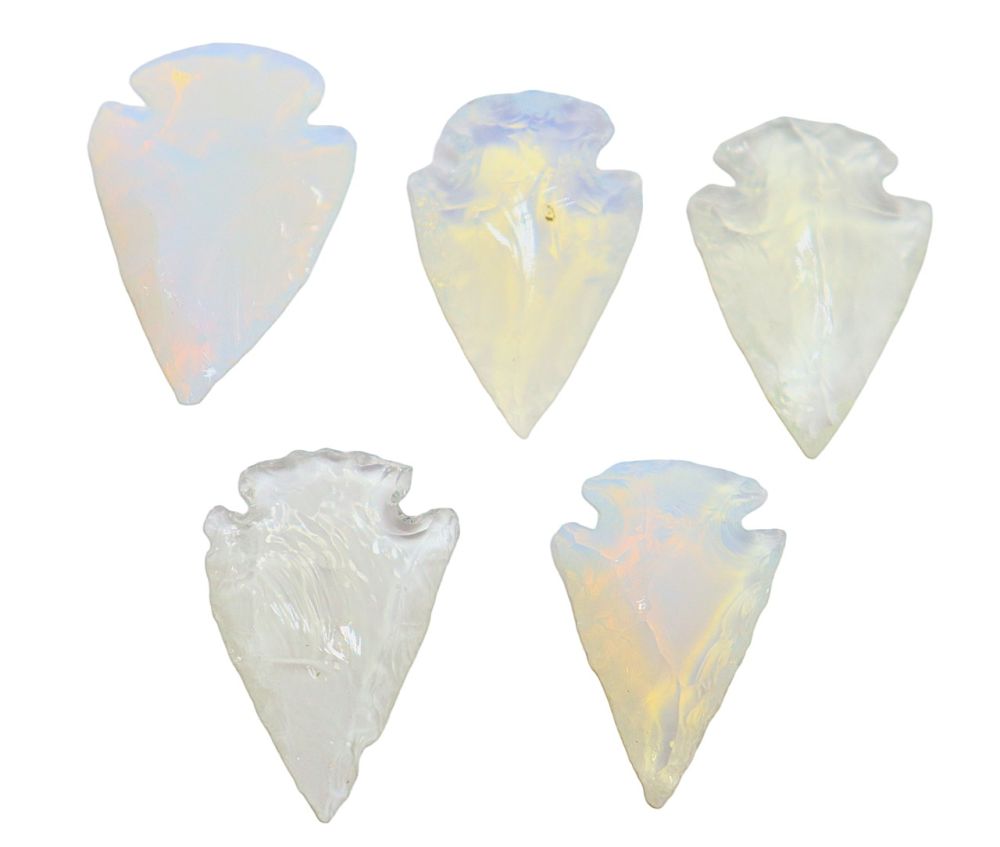We use cookies to make your experience better.
TimmersGems has a new website, existing customers also need to register again.
Opalite arrowhead, made entirely by hand. Opalite from China.
Although the real pipe points that were used in ancient times were made of flint and obsidian, these modern points are also very beautiful and decorative.
Availability:
In stock
SKU
121409
An arrow is usually a part of a bow and arrow that is fired, but there are also throwing arrows and special variants for blowguns, among others. Over the centuries, arrows have been made in various shapes and materials. The construction used clamp connections, glue or thin binding materials, alone or in combination. Because consistency in performance was essential to the shooter, arrow crafting required close attention to detail. An arrow consists of three primary parts: the point, the shaft and the feathering. From ancient arrows, usually only the points remain, as they were often made of durable materials. For stable flight the point should be weighted to shift the center of gravity forward, and for use as a weapon the point should be sharp and sturdy. The design of the tip had to balance aerodynamic properties with the need to fatally hit or seriously injure the target. In prehistoric times, arrowheads were made from flint or obsidian. Both materials are suitable for forming sharp edges: flint was worked with sharp tools to knock off sharp pieces, while obsidian naturally has sharp edges due to its crystal structure. Bone fragments or plant thorns were also used, or the shaft of the arrow was simply sharpened. In later periods bronze and iron were used; metals could be shaped more precisely than stone by forging and casting and were easier to produce in large quantities. Sometimes the arrowhead was dipped in poison or provided with barbs for increased effect.
| Dimensions | Divers |
|---|---|
| Country of Manufacture | China |












